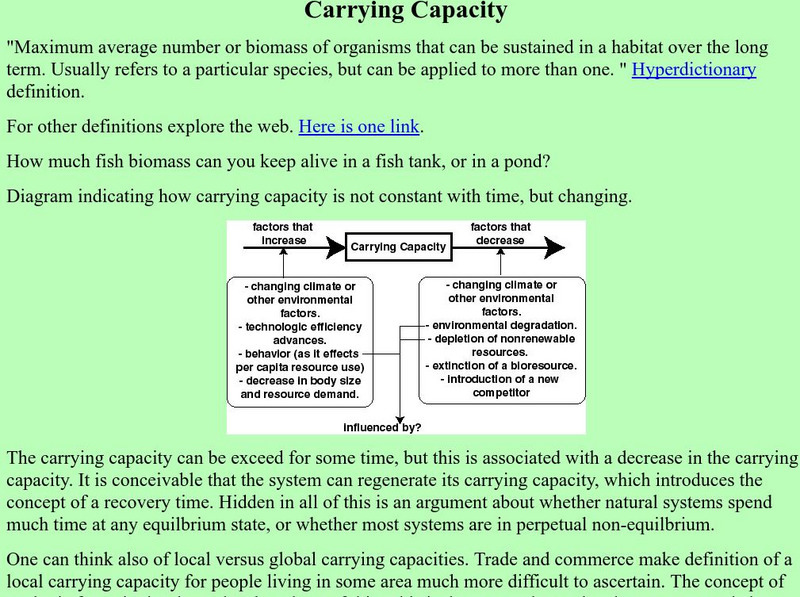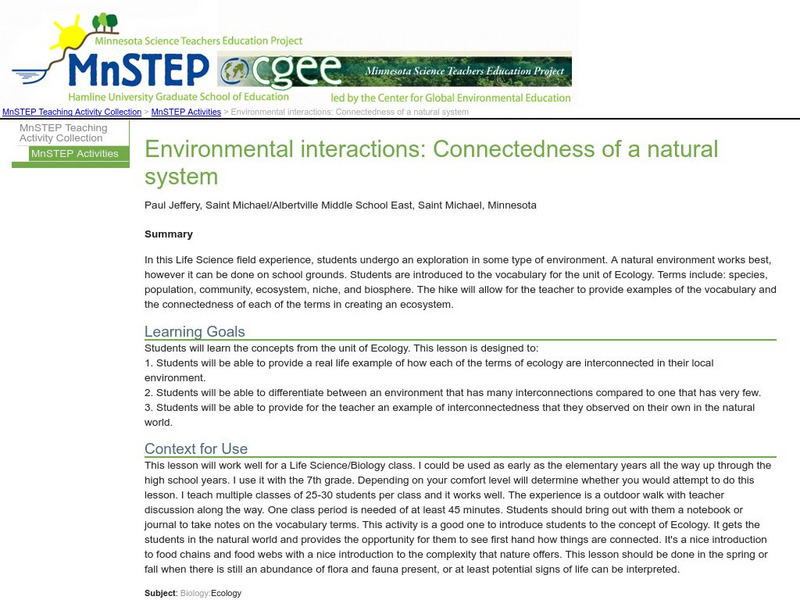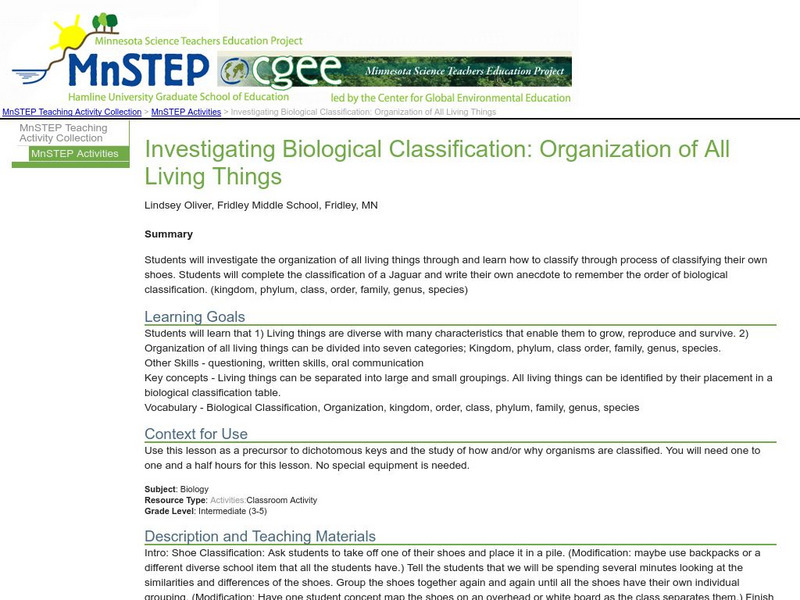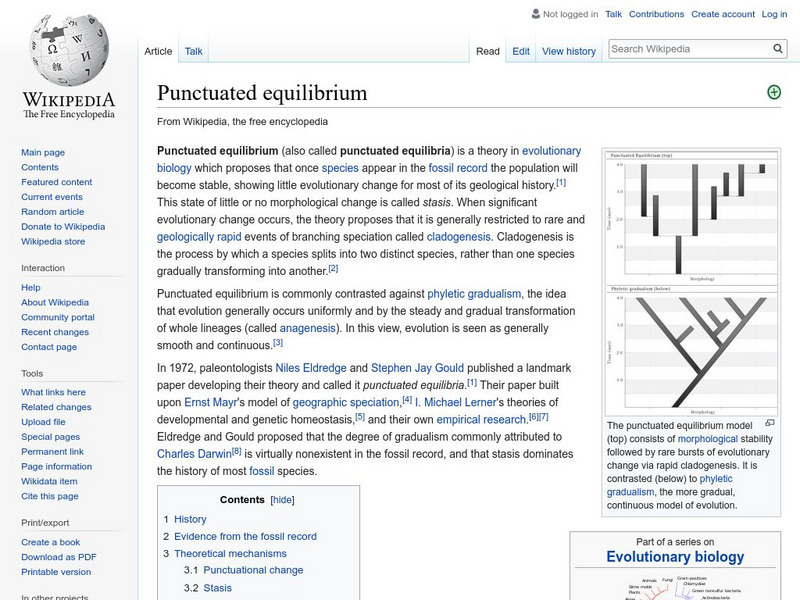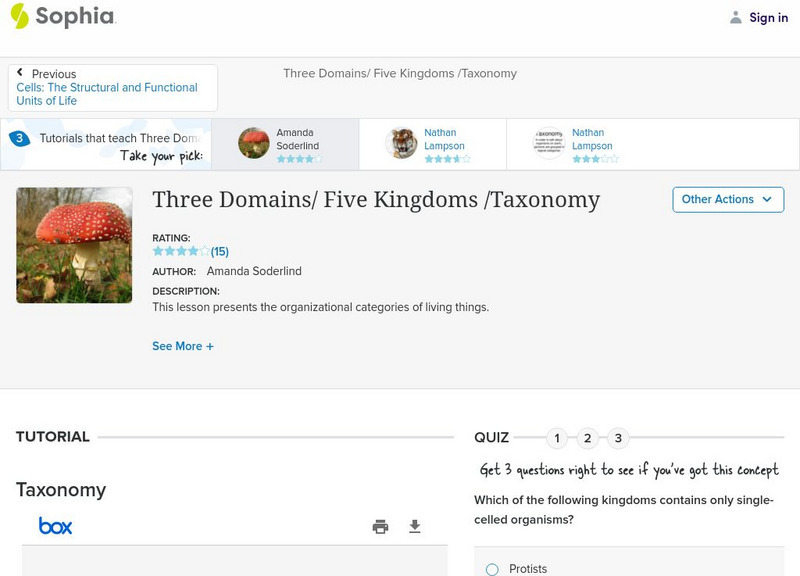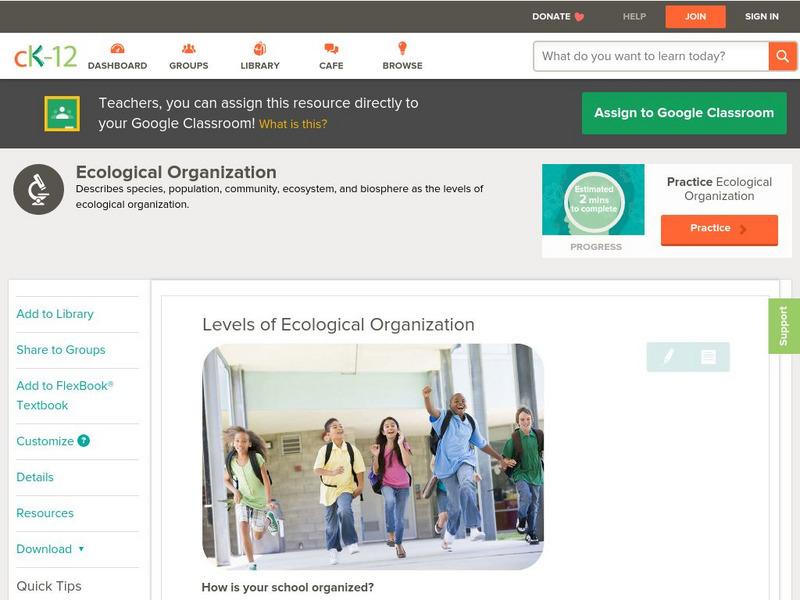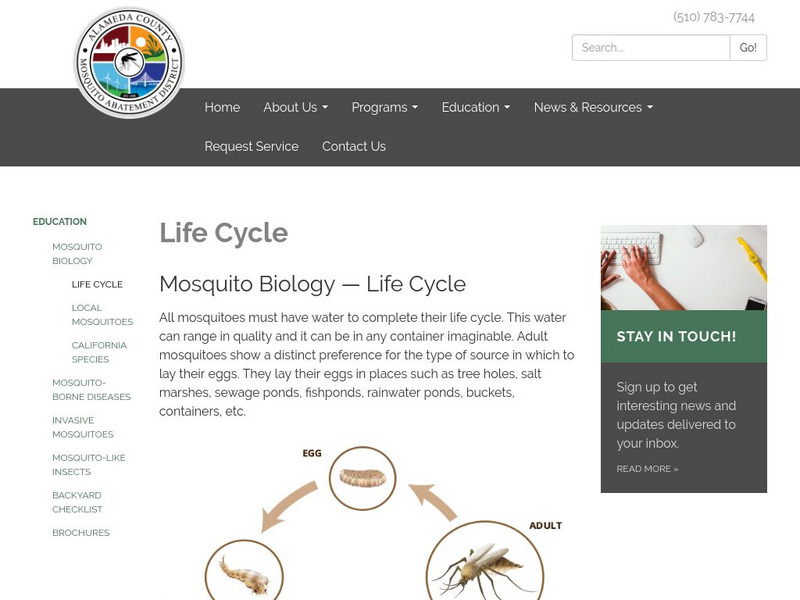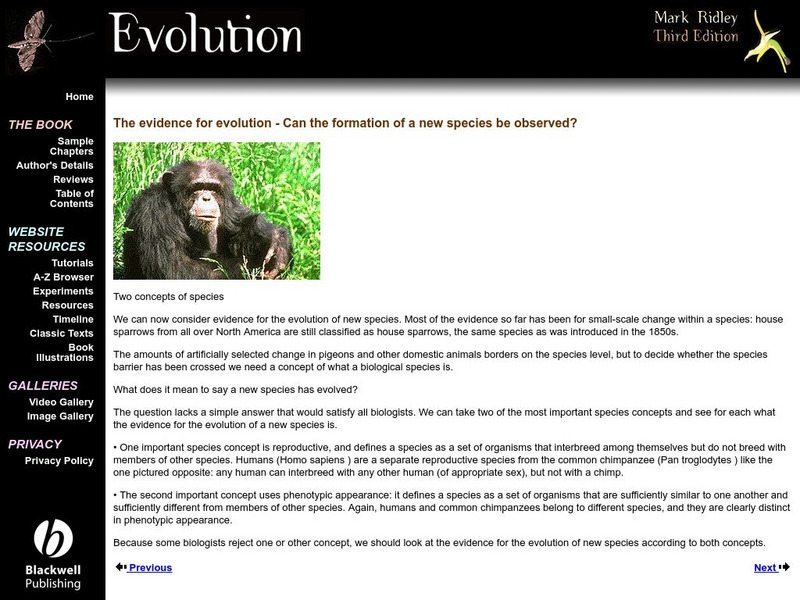University of Nebraska Omaha
University of Nebraska at Omaha: Carrying Capacity
Read through some case studies, and study data that shows how wildlife populations react when they reach carrying capacity.
Science Education Resource Center at Carleton College
Serc: Environmental Interactions: Connectedness of a Natural System
A field experience where students undergo an exploration in a natural environment. They are introduced to the concepts of species, population, community, ecosystem, niche, and biosphere.
Science Education Resource Center at Carleton College
Serc: Investigating Biological Classification: Organization of All Living Things
All living things can be identified by their placement in a biological classification table. Students will investigate the organization of all living things and learn how to classify through the process of classifying their own shoes....
American Institute of Biological Sciences
Action Bioscience: Species: Comparing Their Genome
Identify the significance of studying the genome of different species. Yeast, mouse, fly, and worm all contain several common genes or proteins to humans that allow for disease research.
InterKnowledge Corp.
Geographica.com: Adventure in Argentina
This site from Geographica.com contains information on a variety of parks in Argentina. A description of each follows the name of the park.
Wikimedia
Wikipedia: Punctuated Equilibrium
This brief explanation of punctuated equilibrium includes paragraphs on the history of the theory and the controversy surrounding it.
American Institute of Biological Sciences
Action Bioscience: Species, Speciation and the Environment
The American Institute of Biological Sciences offers this article by Niles Eldredge, evolutionary theorist and curator at the American Museum of Natural History. Eldredge begins with Darwin's theories and summarizes subsequent thought,...
American Institute of Biological Sciences
Action Bioscience: Speciation and Biodiversity
As many species are going extinct due to healthy habitats being destroyed humans are depleting the world of its natural resources. Understand the repercussions of environmental destruction on species and biodiversity through this interview.
TED Talks
Ted: Ted Ed: Every City Needs Healthy Honey Bees
Bees have been rapidly and mysteriously disappearing from rural areas, with grave implications for agriculture. But bees seem to flourish in urban environments- and cities need their help, too. Noah Wilson-Rich suggests that urban...
University of California
University of California Museum of Paleontology: Evolution 101: Speciation
In this tutorial students can learn the definition of species, how new species evolve, and the processes that can cause new species to arise. At the end of the tutorial students can take a quiz to evaluate what they learned about...
Other
Evidence for Evolution: Fossil Record
These pages are part of a site called "Evolution," that accompanies a textbook by the same name. Mark Ridley is the author. In this section he discusses how fossil records provide undeniable examples of evolutionary change.
Quia
Quia: Animal Facts Scavenger Hunt
At this website you are given ten questions to answer and links to three websites where you can find those answers.
Biology 4 kids
Biology4 Kids: Kingdoms = Group, Species = Individuals
An introspective discussion about how scientists determine the specific characteristics of individual species.
Sophia Learning
Sophia: Three Domains/ Five Kingdoms /Taxonomy: Lesson 1
This lesson presents the organizational categories of living things. It is 1 of 3 in the series titled "Three Domains/ Five Kingdoms /Taxonomy."
American Geosciences Institute
American Geosciences Institute: Earth Science Week: Mystery Mollusc
Students become marine biologists, and their goal is to characterize the biological communities that live on or near the seamount in the Monterey Bay area. There, they must identify a mystery mollusk.
CK-12 Foundation
Ck 12: Life Science: Levels of Ecological Organization
[Free Registration/Login may be required to access all resource tools.] Ecosystems are organized into several different levels, and they can be studied at any one of the various levels of organization. Learn more about levels of...
CK-12 Foundation
Ck 12: Life Science: Organization of Living Things
[Free Registration/Login may be required to access all resource tools.] When you see an organism that you have never seen before, you probably put it into a group without even thinking. If it is green and leafy, you probably call it a...
Other
Alameda County Mosquito Abatement: Life Cycle
A discussion on the general characteristics of the mosquito, its feeding habits, flight habits and life cyle.
Other
Rainforest Alliance: Species Profiles
This resource has rain-forest species profiles for amphibians, birds, mammals, insects, and plants. Each profile explains the organism's anatomy, habitat, diet, and threats.
Other
Evidence for Evolution: Formation of New Species
These pages are part of a site called Evolution that accompanies a textbook by the same name. Mark Ridley is the author. These pages offer an explanation of speciation using reproductive isolation and differences in phenotype.
American University
Deforestation in Madagascar
Gives history of Madagascar's cultural and economic development in relation to its land clearing practices. Cites biological species indigenous to the island, and their imminent destruction. Includes links to several case studies.
BBC
Bbc: Gcse Bitesize: Evolution Aqa
Evolution is the change of inherited characteristics within a population over time through natural selection, which may result in the formation of a new species. Fossils provide a record of organisms that lived a long time ago. They also...
E-learning for Kids
E Learning for Kids: Science: Easter Island: Why Do Young Grow Up to Look Like Their Parents?
Kevin and his grandfather, Omag are going to the zoo. Join them and learn all about animal classification and life cycles.
PBS
Nh Pbs: Nature Works: Teacher's Guides
A wealth of resources connected to individual nature-related state standards can be found here. Information in a newsletter-type format is located under particular grade levels and is accompanied by teacher guides and short quizzes to...


